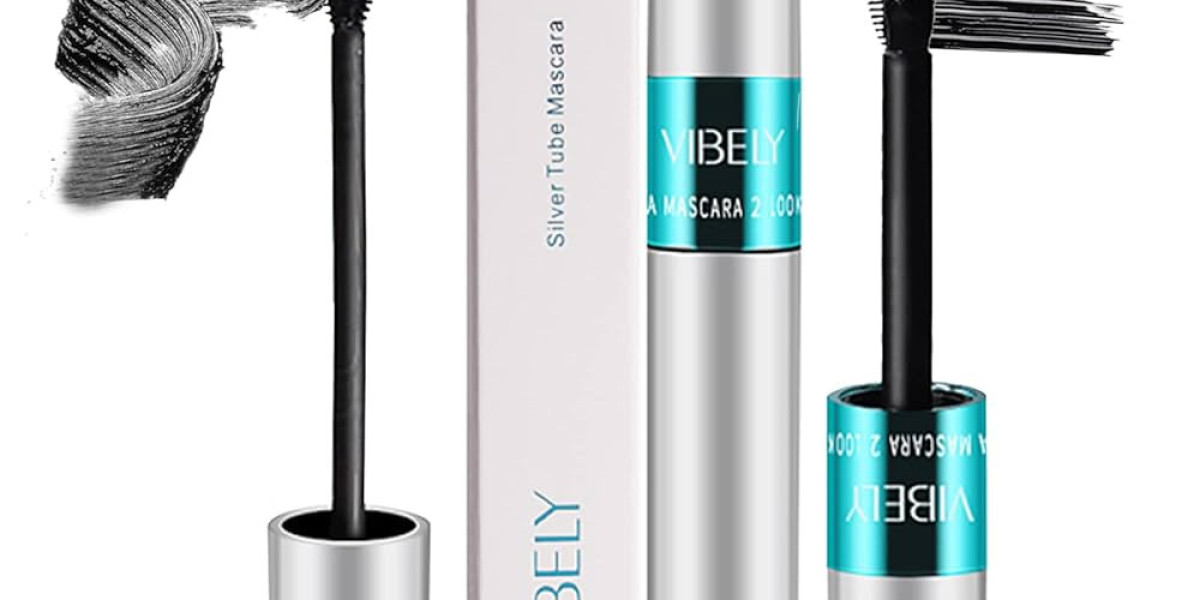Single-use gloves are more than just a precaution; they are an essential tool in maintaining hygiene and ensuring safety across various industries. Whether you're working in healthcare, food service, or cleaning, the right pair of disposable gloves can make all the difference. With so many options available on the market today, choosing the best one for your needs may feel overwhelming. This buyer's checklist is designed to guide you through the process of selecting high-quality single-use gloves that provide both protection and comfort. We will explore everything from materials to sizing, helping you navigate common pitfalls along the way. So let’s dive into what makes a great pair of single-use gloves!
Why Single-Use Gloves Are Important for Hygiene and Protection
Single-use gloves play a crucial role in maintaining hygiene across various industries. They act as a barrier between hands and potentially harmful contaminants, reducing the risk of infection and disease transmission. Whether in healthcare settings or food service, these gloves help uphold strict sanitation standards.
The convenience of single-use gloves ensures that they are disposed of after one use, minimising cross-contamination risks. This is particularly important when handling sensitive materials or working with vulnerable populations. By using fresh pairs for each task, you further enhance safety protocols.
Moreover, wearing disposable-gloves fosters confidence among clients and customers. When people see that proper precautions are being taken, it reassures them about their health and well-being. In environments where cleanliness is non-negotiable, single-use gloves become a vital component of everyday practice.
Key Materials Used in Single-Use Gloves and Their Differences
Single-use gloves are made from various materials, each offering unique characteristics. Latex gloves provide excellent elasticity and comfort, making them a popular choice in medical settings. However, some individuals may have latex allergies, which can limit their use.
Nitrile gloves have gained popularity as a durable alternative. They offer puncture resistance and chemical protection without the allergens found in latex. This makes them ideal for industries like food service and healthcare.
Vinyl gloves are another option, known for being cost-effective and suitable for tasks requiring minimal protection. While they’re less durable than nitrile or latex options, they're perfect for light-duty applications such as food preparation or general cleaning tasks where high levels of contamination risk aren’t present. Each material has its strengths depending on your specific needs.
Factors to Consider When Choosing Disposable-Gloves
When selecting disposable-gloves, several factors come into play. First and foremost, consider the intended use. Different tasks require different levels of protection and dexterity. For example, medical settings may necessitate higher-grade materials compared to food service.
Next, evaluate the material of the gloves. Latex, nitrile, and vinyl each offer unique benefits. Nitrile is known for its puncture resistance and hypoallergenic properties, while latex provides excellent elasticity but can cause allergies in some individuals.
Think about the fit and comfort level. Gloves that are too tight or loose hinder performance and can lead to accidents or contamination risks. Trying on samples or checking sizing charts ensures you find a glove that allows for both safety and ease of movement during tasks.
How to Determine the Right Glove Size for Maximum Comfort
Finding the right glove size is crucial for comfort and effectiveness. Ill-fitting gloves can lead to reduced dexterity, making tasks more challenging. To start, measure your dominant hand's width across the palm just below the knuckles using a measuring tape.
Most brands provide sizing charts based on measurements in inches or centimetres. Compare your measurement to the chart for guidance. Keep in mind that sizes may vary between manufacturers, so always check specific brand recommendations before purchasing.
When trying on single-use gloves, ensure they fit snugly but aren’t overly tight. You should be able to move your fingers freely without any discomfort. A well-sized glove will enhance grip and control while reducing fatigue during prolonged use.
The Role of Thickness and Durability in Glove Performance
The thickness of single-use gloves plays a crucial role in their overall performance. Thicker gloves often provide better protection against punctures and tears, making them suitable for tasks that involve sharp objects or harsh chemicals. However, increased thickness can sometimes reduce tactile sensitivity, which is important for detailed tasks.
Durability also goes hand-in-hand with glove thickness. A durable glove withstands wear and tear during extended use without compromising safety. Choosing the right balance between durability and comfort is essential to maintain effectiveness while ensuring ease of movement.
Different applications may require different levels of thickness and durability. For instance, medical professionals might prefer thinner gloves for dexterity during procedures, while food handlers might opt for thicker options to protect against spills and contaminants. Understanding these nuances helps in selecting the best single-use gloves for specific needs.
Powdered vs Powder-Free Gloves and Which to Choose
When selecting single-use gloves, one critical choice is between powdered and powder-free options. Powdered gloves are often easier to put on, thanks to the cornstarch inside that reduces friction. This can be especially helpful in fast-paced environments where speed matters.
However, powdered gloves may not be suitable for all applications. The powder can cause irritation or allergic reactions in some users and can contaminate sterile environments if used improperly. In sensitive settings like healthcare or food preparation, opting for powder-free gloves is usually a safer bet.
Powder-free gloves eliminate these risks but might feel slightly more snug at first due to their lack of internal lubrication. They provide excellent barrier protection while ensuring comfort during extended wear. Your specific needs and environment will ultimately guide you toward the right choice between these two types of disposable-gloves.
Safety Standards and Certifications to Look For
When selecting single-use gloves, safety standards and certifications are crucial indicators of quality. Look for products that meet the ASTM (American Society for Testing and Materials) standards, as these ensure a level of performance specific to different applications. Gloves marked with ASTM D6319, for instance, signify compliance with medical-grade requirements.
Another important certification is the FDA approval. This guarantees that the gloves have been tested for safety in food handling or medical use. Products bearing this seal reflect adherence to strict regulatory guidelines designed to protect users.
Additionally, consider European certifications like EN455 for medical gloves or EN374 for protective gloves against chemicals. These certifications not only enhance credibility but also provide peace of mind when it comes to hygiene and protection during usage. Always check labels carefully before making your purchase decision.
Common Mistakes to Avoid When Buying Disposable Gloves
One common mistake is overlooking the importance of material. Many buyers of disposable gloves don't realise that different materials serve various purposes. For instance, latex gloves provide excellent elasticity but may cause allergies in some users, while nitrile gloves offer a robust alternative without allergy concerns.
Another pitfall is ignoring size and fit. Purchasing the wrong size can lead to discomfort during use or even compromise safety. Always take the time to measure your hands and consult sizing charts provided by manufacturers for an accurate fit.
Many people focus solely on price rather than quality. While it’s tempting to opt for cheaper options, low-quality gloves often fail under stress, leading to potential exposure risks. Investing in reliable brands ensures you’re getting both safety and performance when it matters most.
Cost vs Quality: How to Find the Right Balance
When it comes to single-use gloves, cost and quality often seem at odds. Many buyers feel tempted to opt for cheaper options, lured by lower price tags. However, compromising on quality can lead to issues such as tearing or contamination.
Investing in higher-quality gloves might mean spending a bit more upfront, but the benefits are significant. Durable materials reduce the risk of breakage while providing better protection against harmful substances. Choosing reliable brands often ensures you’re getting tested products that meet safety standards.
Finding the right balance requires evaluating your specific needs. Consider factors like usage frequency and exposure risks when selecting gloves. A well-thought-out purchase not only protects your health but also proves economical over time by minimising waste and reducing replacements.
Best Practices for Storing and Handling Single-Use Gloves
When it comes to storing and handling your single-use gloves, there are a few best practices that can ensure they remain effective and safe for use. Start by keeping them in their original packaging until you're ready to wear them. This helps protect the gloves from contaminants.
Store disposable-gloves in a cool, dry place away from direct sunlight or extreme temperatures. Heat can weaken the material, compromising its integrity before you even put it on.
It's also wise to handle gloves with clean hands. This minimises the risk of transferring harmful substances onto the glove’s surface before usage. When removing used gloves, do so carefully to avoid any contact with skin or surfaces that may be contaminated.
Always check for any visible tears or defects before using a pair of gloves; if you find any issues, discard those immediately and grab a new set. Consider having a designated area for glove storage that's easily accessible yet organised. Keeping everything tidy ensures efficiency when you need protection quickly during critical moments.
Conclusion
When it comes to choosing single-use gloves, making informed decisions is crucial. From understanding the materials used to assessing safety standards, every detail matters in ensuring hygiene and protection. Prioritise comfort and fit while keeping thickness and durability in mind. This way, you can maintain dexterity without compromising on safety during various tasks. Storing and handling these gloves properly also plays a significant role in their effectiveness. By following best practices, you can enhance your overall experience while using disposable gloves across different settings.
FAQs
Choosing the right one-use gloves can raise many questions. Here are some common queries and their answers to help you make an informed decision.
Are single-use gloves safe for food handling?
Yes, single-use gloves are designed specifically for hygiene and protection when handling food. Look for gloves that meet safety standards applicable in your region.
Can I use latex gloves if I have a latex allergy?
No, individuals with a latex allergy should avoid latex gloves entirely. Instead, opt for alternatives like nitrile or vinyl, which provide similar levels of protection without triggering allergies.
How do I know what glove size is best for me?
To find the right size, measure the circumference of your dominant hand just below the knuckles using a tape measure. Match this measurement to the sizing chart provided by manufacturers to ensure a comfortable fit.
Are thicker gloves always better?
Not necessarily. While thickness can indicate durability, it’s essential to balance thickness with flexibility and comfort based on the tasks you’ll be performing.
What’s more important: cost or quality when purchasing disposable gloves?
Quality of disposable gloves should take precedence over cost since inferior products may compromise safety and performance. However, it is possible to find high-quality options that fit within your budget; research and compare brands before making your choice.
With these insights in mind, selecting single-use gloves tailored to your needs becomes an easier task.
Related Business Listings |















